Phalanx CIWS: the Navy’s automated, radar-guided 20mm gatling gun for ship defense (and more!)
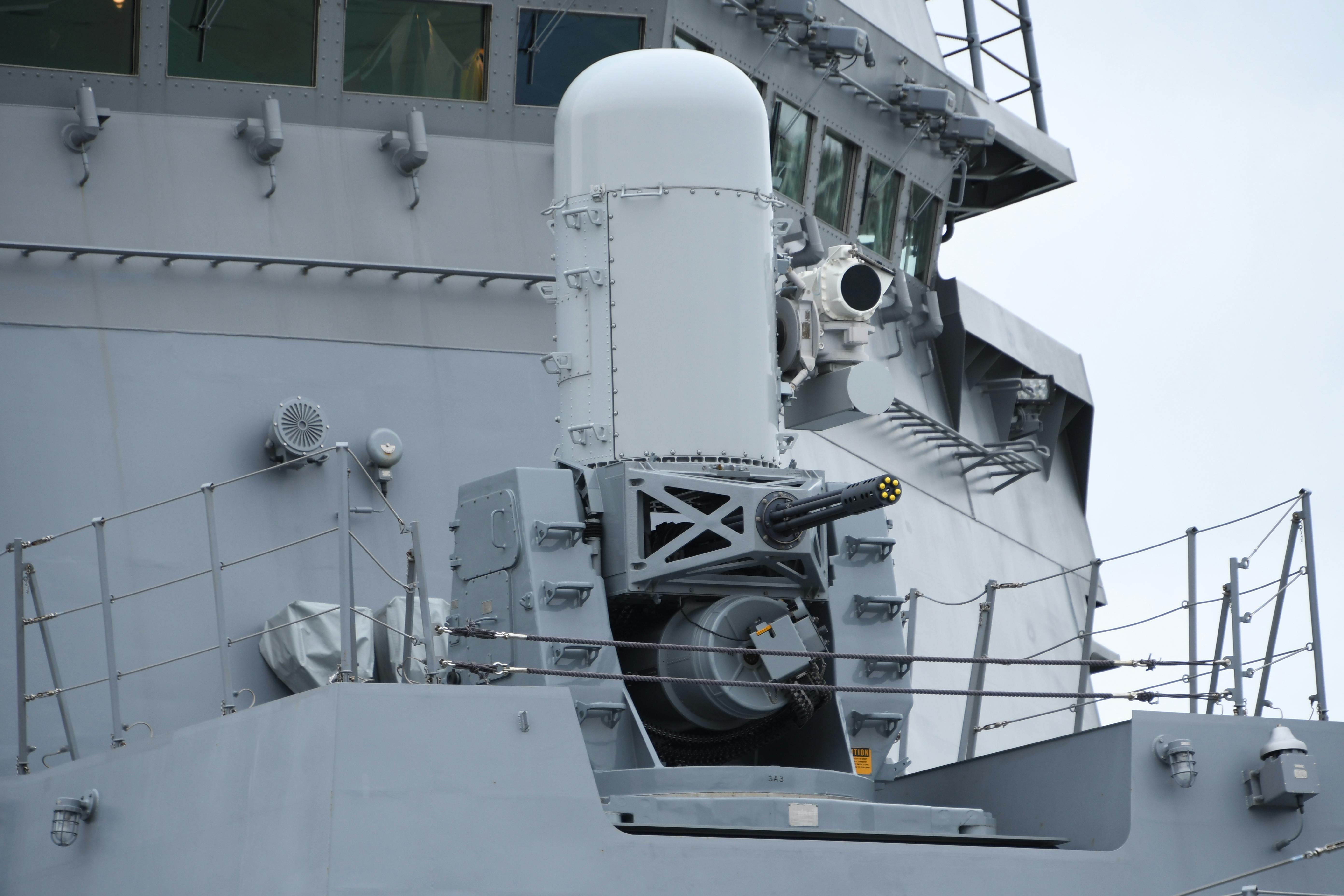
Blog
In the late 1960s, a new threat emerged to trouble the US Navy and her allies: Anti-ship cruise missiles. Until this point, the primary concern of the Navy’s defensive strategy was manned attacks using fighters, bombers, and submarines. However, these new, small, high-speed anti-ship cruise missiles flew lower and faster than manned aircraft, could be fielded by smaller countries or even radical independent forces, and were capable of sinking large, heavily armored ships with a single impact near the waterline.
The Navy began a serious, 2-pronged approach to develop ship defense systems capable of intercepting and destroying the new anti-ship missiles. First, they modified their AIM-7E Sparrow air-to-air missile used on the F-4 Phantom and incorporated it into a radar-based “point defense” system now called the RIM-7 Sea Sparrow. Secondly, General Dynamics took the Vulcan M61 20mm rotary cannon from the Army’s M163 Vulcan Air Defense System (VADS) and developed an automated, self-contained system capable of identifying enemy threats at closer ranges and shooting them out of the sky with a hail of bullets. This system, called the Phalanx CIWS (for Close-In Weapons System) has proven so effective that the US Army also uses the Phalanx system for counter-rocket, mortar, and artillery defense. That’s right… The CIWS is so good it can actually shoot incoming 155mm artillery shells, rockets, and even mortars out of the sky.
Military personnel can sometimes have a fairly crude sense of humor, but from the shape of the CIWS it’s easy to see why some saltier sailors refer to the Phalanx as “R2-D2 with [an erection].” There are even photos and videos of a CIWS dressed up to look like one of Gru’s minions. However, this fire-breathing, 4,500-round-per-minute cannon is nothing to laugh at, particularly for America’s enemies. Let’s go over what makes it so devastating (and cost-effective!).
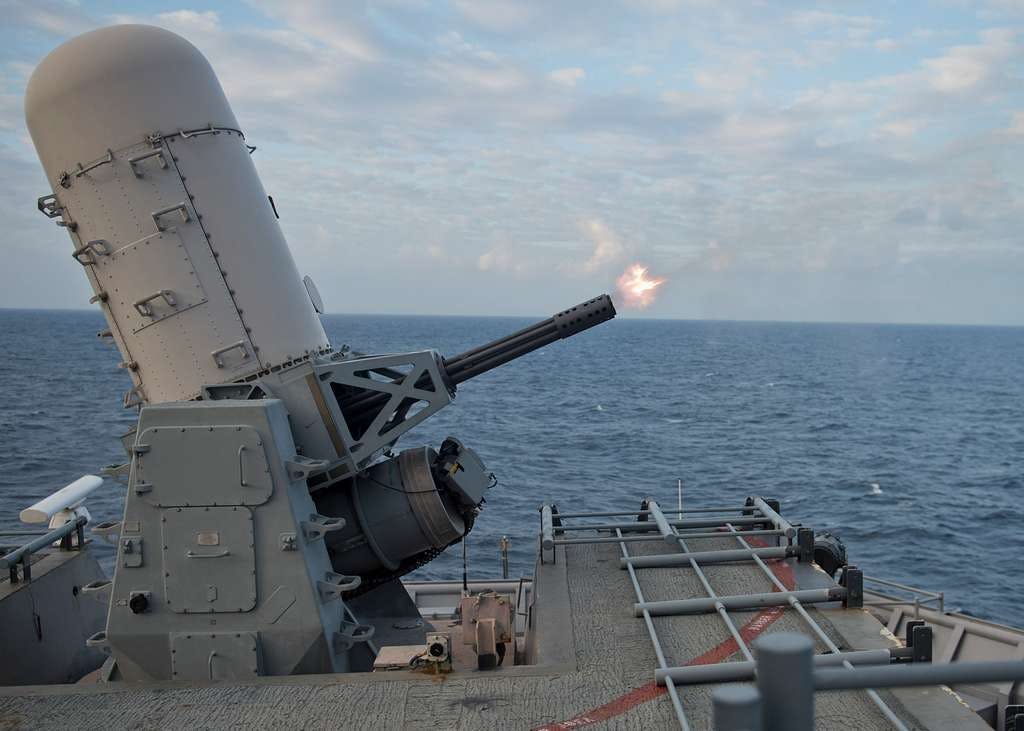
The concept of using rapid-fire machine guns for air defense is not new
The most successful heavy machine-gun designs in history were created by John Moses Browning, another Utah-based innovator (along with Intergalactic). Browning’s M2 .50-caliber machine gun was built in several variants for different purposes. The ground-based models fired at a rate of between 450 and 575 rounds per minute, which by machine-gun standards is quite “slow.” However, M2 variants for use in fighters and bombers had accelerated rates of fire up to 1,300 rounds per minute. Why is this important? Because when you’re shooting at a fast-moving airplane, or even more importantly, when you’re shooting from one fast-moving airplane at another fast-moving airplane, the more bullets you can get in the air in a short amount of time, the better your chances of hitting your target in the split second it might be in your sights and at the right angle of attack for ballistic intercept.
A good way to imagine this is trying to shoot a pesky housefly out of the air with a squirt gun that shoots one short squirt every time you pull the trigger, versus trying to hit it with a garden hose on full blast. Both are difficult, but you have a lot greater chance of hitting it with a big, constant stream of water rather than just the occasional, intermittent squirt.
Cranking up the rate of fire of airborne machine guns until they became closer to “bullet hoses” improved their effectiveness dramatically, but it also shortened the life span of the barrels to a few thousand rounds due to accelerated wear and heat buildup. The modern multi-barreled “gatling gun” changes things dramatically.
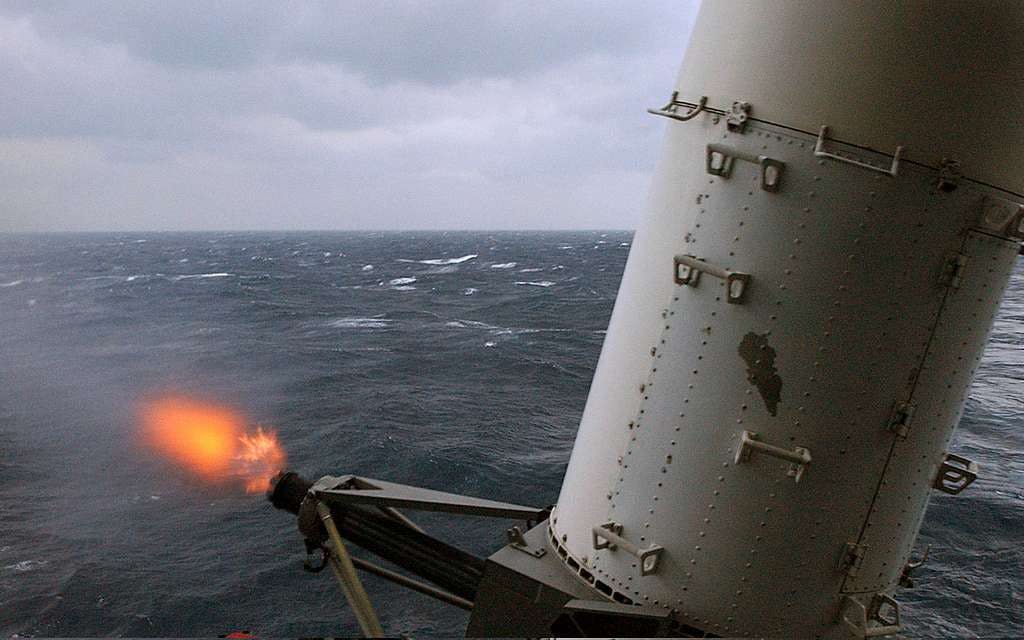
How does the Phalanx CIWS’s 20mm cannon function while dealing with thermal issues (heat)?
The Phalanx’s M61A1 Vulcan 20mm cannon is not your granddaddy’s Browning. Rather than being recoil-operated like the Browning, which means the force of the expanding gas of each shot fired is used to mechanically cycle the action, eject the spent cartridge case, strip the next round from the belt, and chamber/fire it, the Vulcan is electrically driven and has separate mechanisms for rotating its 6 barrels, feeding its heavy belt of ammunition, delinking each round from its belt, and chambering/firing/extracting each round. Separating these tasks and using external electrical power to drive the entire system allows the Vulcan in the Phalanx system to fire not at 1,300 rounds per minute, but at an astonishing 4,500 rounds per minute, producing a highly destructive stream of airborne projectiles while maintaining barrel temperatures low enough to remain operational.
Legacy machine guns or cannons utilizing only one barrel could only fire for relatively short periods in sustained fire before their barrels would heat to the point that they were glowing red and could actually start drooping far enough for bullets to break through the barrels, causing a destructive and dangerous condition. This is why you often see large water jackets fed by tubes and water cans on WWI and WWII machine guns, why most light and heavy machine guns have quick-change barrel assemblies, and why they can only fire in relatively short bursts if their operators want them to remain functional.
However, as Dr. Gatling figured out in the 19th century, rotary, multi-barreled guns with 3, 4, 5, 6, or more barrels can achieve greatly increased rates of fire as well lengthening the time each barrel can survive in a constant-fire situation, since each barrel is only firing ⅙ of the time (in the case of a 6-barreled cannon like the Phalanx CIWS). Additionally, a full magazine of 1,500 rounds of 20mm ammunition goes quick, meaning that each CIWS, if firing continuously, only has enough ammunition for 20 seconds of engagement. Divide that by 6 barrels that means that each barrel is only firing for 3.3 seconds before being allowed to cool. This is well within the heat tolerance of the ordnance-grade steel used in the barrels. What’s more, studies show that the typical length of engagement only expends around 300 rounds, which keeps the barrels cool while still providing the high rate of fire and number of projectiles in the air to effectively destroy incoming enemy threats.
The cluster of barrels on the CIWS is air-cooled for simplicity and reliability, but the electronics package is cooled by a circulating water system, similar to many modern aircraft and spacecraft avionics.
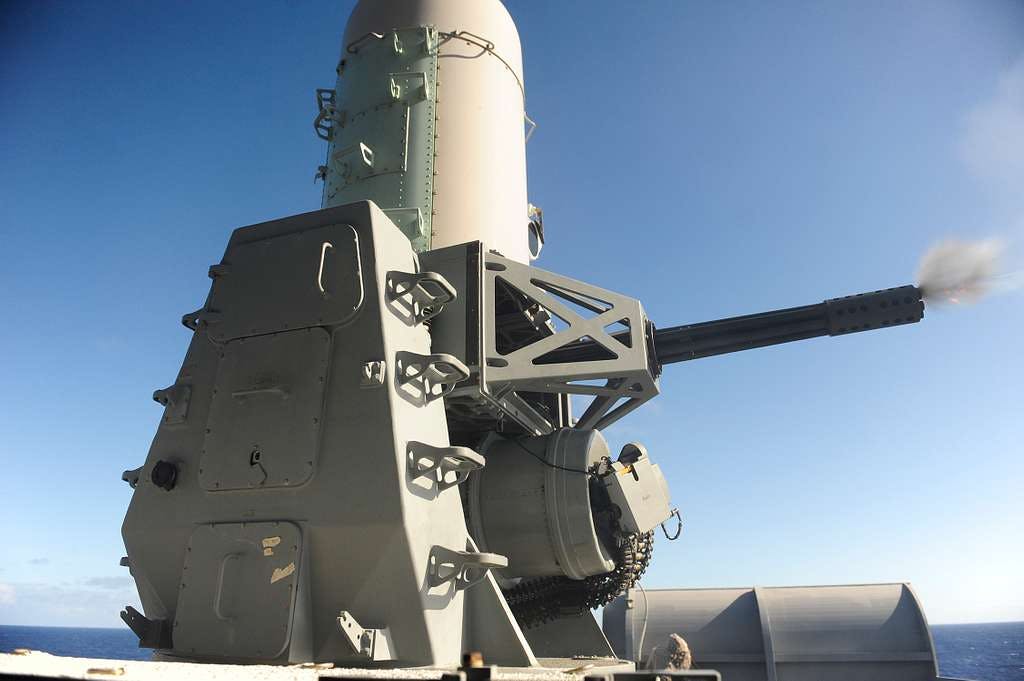
How does the automatic threat detection and targeting system of the Phalanx CIWS (and Centurion C-RAM) work?
The Phalanx CIWS has developed into a stand-alone, automated system that can be mounted on any desired location of a ship or, in the case of the Army’s land-based Centurion C-RAM (Counter-Rocket Artillery Mortar) version, on a large truck. The system uses two radar antennas that work in concert with each other. The search antenna is located in the top, rounded portion of the weather housing (R2-D2’s “head” if that helps you visualize it), and is continually scanning the sky and area around the installation for incoming threats, and sends all potential targets to its processing computer for near-instant analysis.
The Phalanx performs multiple functions at once, including search, detection, threat evaluation, tracking, engagement, and kill assessment. The electrically driven swivel base system allows both left/right and up-down sweeps in a 150-degree arc from the centerline, which when mounted properly allows defense against both high-altitude airborne threats as well as low-altitude or surface-level threats.
If the search antenna and computer determine a probable threat is approaching, that information is relayed to the larger tracking antenna, a more focused radar antenna housed in the cylindrical “body” below R2’s head. This antenna has a more narrow “field of view,” if you will, but is much more precise than the search antenna. The tracking antenna is automatically aimed toward the threat, along with the integral Vulcan cannon, and feeds information to the CIWS’s computer until a probable hit is determined, at which point the electrically driven motors move the gun into the proper position and keep tracking the object. The Phalanx can either fire its cannon automatically (if pre-set to do so) or recommend a fire command to the human operator, who can approve or deny that recommendation based on intel.
But wait! There’s more, as Ron Popeil would say. Upon firing, the system tracks the outgoing fire, evaluates the projectiles’ trajectory and effectiveness, and if adjustment is needed, the CIWS automatically makes the needed adjustment to bring the steam of bullets into the path of the desired threat. This process can be repeated until either the threat is eliminated or the operator initiates a cease fire.
You might wonder what happens to any of the 20mm bullets that fail to hit the intended target. After all, they can travel for miles. The Navy’s CIWS uses 20mm armor-piercing tungsten projectiles, while the Army chooses M940 20mm HEIT-SD (high-explosive incendiary tracer, self-destructing) rounds that either explode upon impact with the target, or in case of a miss, when their tracer material burns out, at around 2,000 yards distance. This helps prevent unintended collateral damage to people or objects in the surrounding area. In the large expanses of the open sea, ostensibly the Navy doesn’t have to worry as much about this potential issue, and the effective range of their Phalanx is a bit larger as a result.
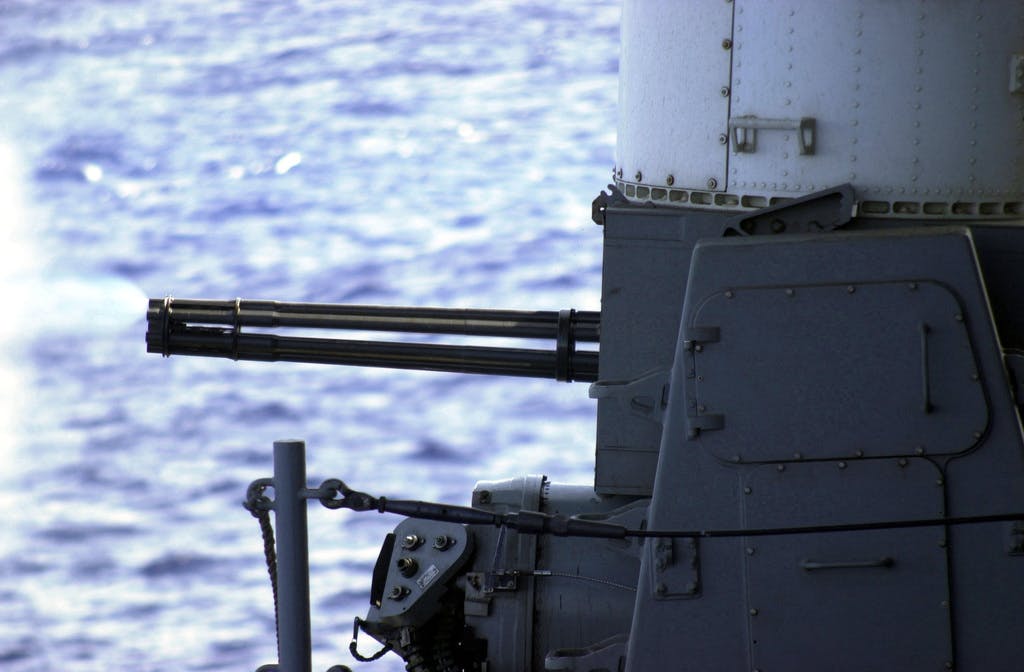
How far can a Phalanx CIWS shoot effectively?
The “close-in” part of the Close-In Weapons System is not a misnomer. The Phalanx utilizes non-powered projectiles (basically large bullets) that start slowing down the instant they leave the muzzle of the barrels, and simply follow a ballistic path to the earth. Even a 20mm projectile can only travel so far once it leaves the barrel of the cannon. The multi-projectile nature of a very high-volume rotary cannon improves the effective range significantly, but still, the maximum potential range on larger, slower-moving targets is only around 5 nautical miles, or around 9 kilometers. The effective range on smaller, faster-moving threats is from around 2 nautical miles or 3.6 km and in. By comparison, the RIM-7 Sea Sparrow missile has an operational range of around 10 nautical miles or 19 kilometers.
For precision or more difficult shots like an incoming artillery round on a ballistic trajectory (rather than an anti-ship cruise missile which can appear to be stationary as it flies straight toward a ship at a consistent altitude), the engagement range of the Phalanx/Centurion might be much closer, around a few hundred meters or even closer in some cases. The closer the engagement range, the tighter the swarm of 20mm projectiles are and the greater the chance of hitting and destroying the threat effectively.
Phalanx CIWS block upgrades and improvements
Since its first prototype trials in 1973 and its subsequent completion of its Operational Test and Evaluation (OT&E) on board the destroyer USS Bigelow in 1977, the Phalanx has undergone several upgrades and updates, first entering production in 1978 and full service aboard the aircraft carrier USS Coral Sea in 1980.
Block 0: The original Phalanx system, designed to engage and destroy inbound anti-ship cruise missiles. Fired at 3,000 rounds per minute (50 rounds per second).
Block 1: Improved capability to include high-altitude missile attacks with an improved antenna, and increased ammunition capacity by 50%. Rate of fire was increased to 4,500 rounds per minute (75 rounds per second).
Block 1A: Improved software and processing power to allow the CIWS to perform better against multiple inbound threats at once.
Block 1B PSUM: This is the current version of the system. The Phalanx Surface Mode variant adds a forward-looking infrared (FLIR) camera to assist in detecting the heat signatures of inbound threats such as low-flying helicopters and high-speed boats at sea, and ground vehicles on land. The FLIR’s capability is also of use against low-observability missiles and can be linked with the RIM-116 Rolling Airframe Missile (RAM) system to increase RAM engagement range and accuracy. The Block 1B CIWS utilizes a high order language computer (HOLC) and adds an end-to-end test capability. It introduces adaptive filtering software, written in ADA, as well as a basic interface to accommodate integration with the Ship Self Defense System (SSDS). The Block 1B variant also allows for an operator to visually identify and target threats instead of, or in addition to, the CIWS’s auto-targeting capabilities.
The Phalanx CIWS has proven so effective that it is currently “standard equipment” installed on all US Navy combat ship classes, and is used by 24 allied nations as well. The land-based C-RAM Centurion system has seen combat in Iraq where “It was found that C-RAM could knock down 70-80 percent of the rockets and mortar shells fired within range of its cannon. [In a two year period,] Centurion systems in Iraq… intercepted over a hundred rockets or mortar shells aimed at the Green Zone. In January 2021, the C-RAM system was used to shoot down drones targeting a compound at Baghdad airport,” according to one 2022 report.
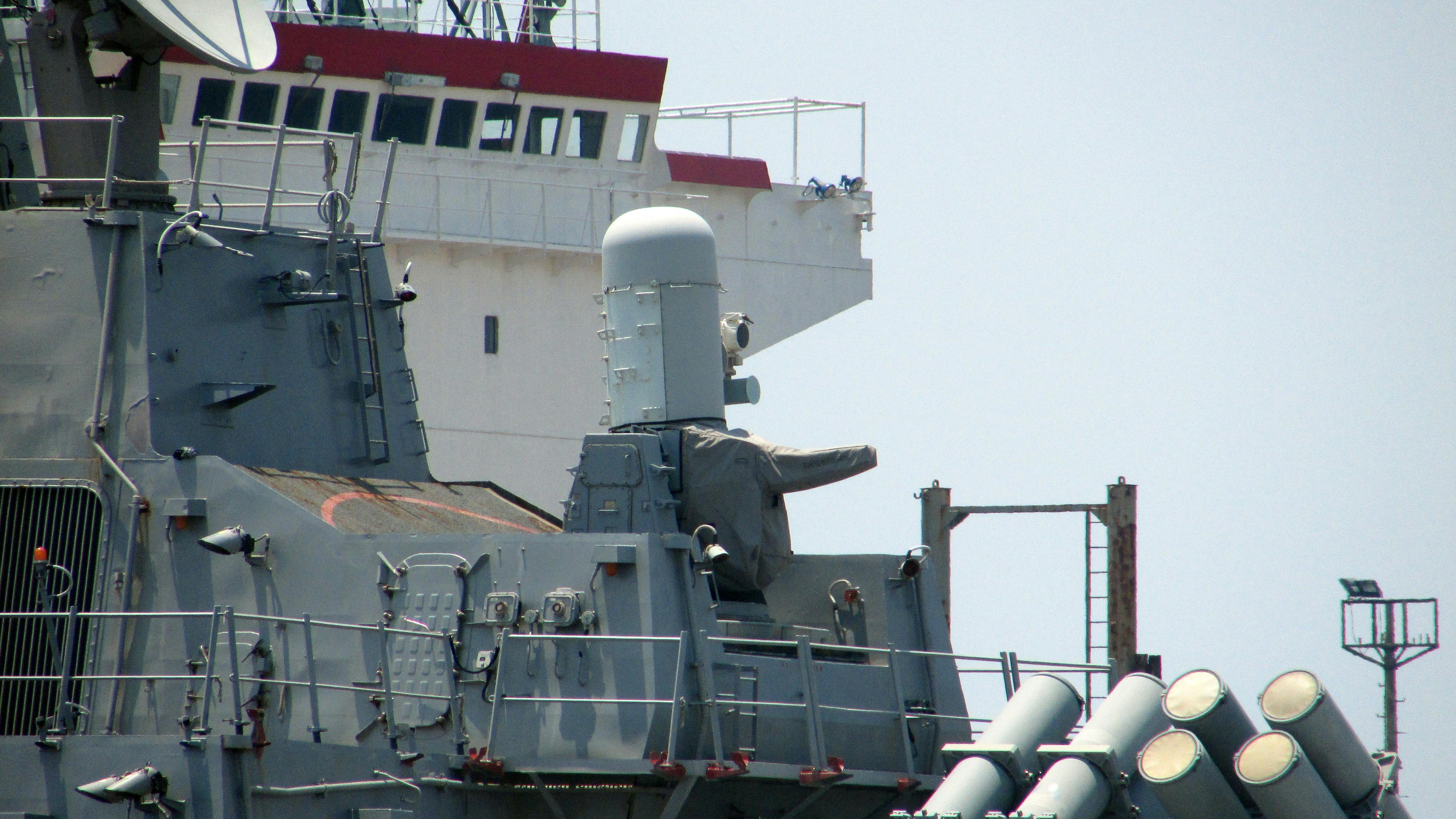
How much does the Phalanx CIWS cost and what is the budget for the program?
The most recent total budget cost estimate we could find was from 1997 when the total project cost was estimated at around $2.7 billion, with an average unit cost of $3.8 million. However, the Navy’s Justification Book for ships and weapons systems lists the FY2023 unit cost of the CIWS system at between $8 and $18 million depending on how you read the report. $3.8M in 1997 dollars is close to $8M today, so we’d guess that’s a fairly accurate unit cost over the past couple of decades.
That may seem like a lot of scratch for what is effectively a really smart machine gun, but if you factor in the cost savings per engagement, the Phalanx and Centurion come out looking like positive bargains. According to the Missile Defense Advocacy Alliance, “typically 300 rounds [are] used per engagement at 27 dollars a round, making $8,100 dollars the total cost per engagement.” Compare that to the least-expensive air-to-air missile in the US inventory, the AIM-9 Sidewinder, which today costs about $455,000 each, and AMRAAMs costing about $1.1 million per shot, and the savings really start to add up. What’s more, guided missiles don’t have the capability of shooting down mortars and artillery shells, while the Phalanx/Centurion does.
Enterprising, hungry sailors could probably even cook a rotisserie chicken on the smoking hot barrels of the Vulcan cannon. Ron Popeil would be proud.
–By Jeff Davis, Intergalactic Scribe
Sources:
http://www.navweaps.com/index_tech/tech-103.php
https://missiledefenseadvocacy.org/alert/defeating-the-cost-curve-in-ukraine/
https://www.globalsecurity.org/military/library/budget/fy1997/dot-e/navy/97ciws.html
https://media.defense.gov/2023/Mar/29/2003188820/-1/-1/0/SCN_BOOK.PDF